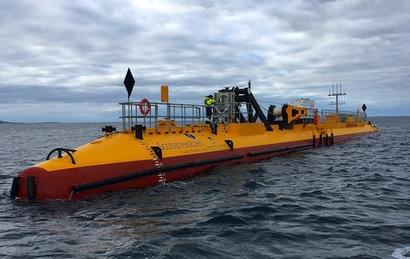
During this period, the surface floating SR2000 endured wave heights in excess of 7 metres. It also managed to maintain continuous generation in sea states of over 4 metres significant wave height and maintained 2 MW rated power in seas of 2 metres significant wave height – demonstrating the turbine is capable of generating through around 99 percent of conditions experienced at the Orkney site.
Scotrenewables has been testing its SR2000 at EMEC’s Fall of Warness test site since August 2017 and it will continue to run through 2018. Over the past five months, the SR2000 has generated in excess of 1.2 GWh.
“This is our first winter operating the 2 MW unit and we are already fully validating the strong performance and stability of the turbine in really harsh conditions,” said Scotrenewables CEO, Andrew Scott.
The company has also confirmed that it has only been using low cost vessels for all turbine maintenance and inspections through the period, and has demonstrated service response times of under 1 hour along with ship-to-turbine crew transfers in up to 2 metre significant wave heights.
Scott added that low cost tidal energy is dependent on being able to maintain turbines cost effectively and maximise generator up time and that, with its locally stationed service team using small boats, as well as ability to access the turbine in a range of sea conditions, Scotrenewables has this essential capability with its technology and approach.
Image: SR2000 tidal current turbine
For additional information:

